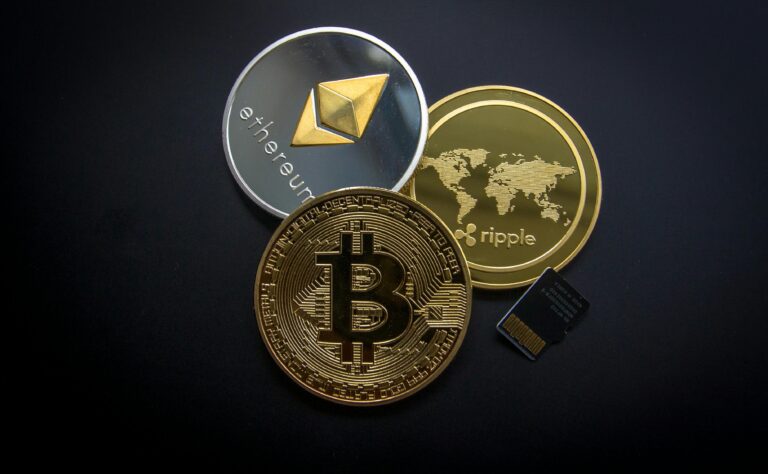Understanding NFTs (Non-Fungible Tokens)
Do you know what NFTs are and how they work? We’ve got you covered! In this article, we’ll explain the basics of NFTs, their history, and how they function. You’ll also learn about the benefits and concerns surrounding NFTs. By the end, you’ll have a solid grasp of why NFTs are significant in today’s digital landscape.
What Are NFTs?
NFTs are unique digital assets. These tokens are created on a blockchain and represent ownership of a unique item, whether it’s digital art, music, or even real estate.
NFTs cannot be replicated. They are created through a process called minting, which involves encrypting the asset’s information on a blockchain. This makes each token unique and gives it a specific value.
Unlike cryptocurrencies such as Bitcoin, which are fungible (one Bitcoin is equivalent to another), NFTs are non-fungible. Each NFT is distinct and holds unique properties, making them irreplaceable.
How Do NFTs Work?
NFTs are created through minting. This process involves validating and recording the asset’s information on a blockchain. Each token gets a unique identifier linked to a blockchain address, which is publicly visible.
The minting process includes smart contracts that assign ownership and manage transfers. While many blockchains can create NFTs, they may have different names and slightly different functionalities. For instance, on Ethereum, they’re called ERC-721 tokens, while on the Bitcoin blockchain, they are referred to as Ordinals.
Examples of NFTs
- Digital Art: Beeple’s artwork sold for $69 million.
- Cryptokitties: Unique digital cats on Ethereum’s blockchain.
- Virtual Worlds: Ownership of digital property or avatar wearables.
- Sports: Digital art based on celebrities and sports personalities.
History of NFTs
NFTs have been around since 2014. The first known NFT was “Quantum” by Kevin McKoy. Initially created on Namecoin, it was later minted on Ethereum and sold in 2021.
In March 2021, Beeple’s NFT artwork set a record by selling for over $69 million. This sale brought NFTs into the mainstream spotlight.
Key Standards for NFTs
- ERC-721: The original standard for creating NFTs on Ethereum.
- ERC-1155: An improved standard allowing multiple NFTs in a single contract, reducing costs.
Benefits of NFTs
NFTs offer market efficiency and security. By tokenizing physical or digital assets, NFTs streamline sales processes and reduce fraud. They eliminate intermediaries, allowing direct transactions between buyers and sellers.
Tokenization can make the buying, selling, and trading of assets more efficient, reducing the probability of fraud. For example, an artist can tokenize their work and sell it directly to collectors, bypassing galleries or agents.
| Benefits | Description |
| Market Efficiency | Streamlines sales and removes intermediaries. |
| Security | Ownership is recorded on an immutable blockchain. |
| Investment Opportunities | Allows fractional ownership of physical assets. |
Use Cases of NFTs
- Investing: NFTs can represent ownership in assets like real estate or fine wine.
- Collectibles: Digital art, trading cards, and virtual items.
- Identity Security: Personal information stored on a blockchain.
Concerns About NFTs
NFTs have limitations and risks. They can be copied and circulated without permission, posing piracy issues. Additionally, NFTs have low liquidity, meaning it can be challenging to find buyers for specific tokens.
Furthermore, the value of NFTs is highly volatile, dependent on market demand and trends. This can make NFTs a risky investment, especially for those unfamiliar with the market dynamics.
How NFTs Make Money
NFTs generate income based on their market value. If the NFT represents a valuable asset, such as real estate or a popular piece of digital art, it can appreciate over time, allowing the owner to sell it for a profit.
The Point of Having NFTs
NFTs hold value to different people for various reasons. To an investor, they might appreciate in value. To a collector, they might be a unique addition to their collection. Some may view NFTs as memorabilia or a representation of a specific moment they treasure.
Concept Behind NFTs
The idea behind NFTs is to create tokens that represent ownership. These tokens are secure, immutable, and don’t require third-party intervention. This makes NFTs a revolutionary concept in the digital and physical asset markets.
Conclusion
Non-fungible tokens represent a significant evolution in the world of digital assets. By providing unique and secure ownership of digital and physical items, NFTs have the potential to revolutionize various industries.
Despite their benefits, it’s essential to understand the risks and challenges associated with NFTs before diving in. Whether you’re an investor, collector, or just curious, NFTs offer a fascinating glimpse into the future of digital ownership.



